Greenest House Ever?
Peeking Under the Hood of Allen Associates' Super Sustainable Victoria Garden Mews Development
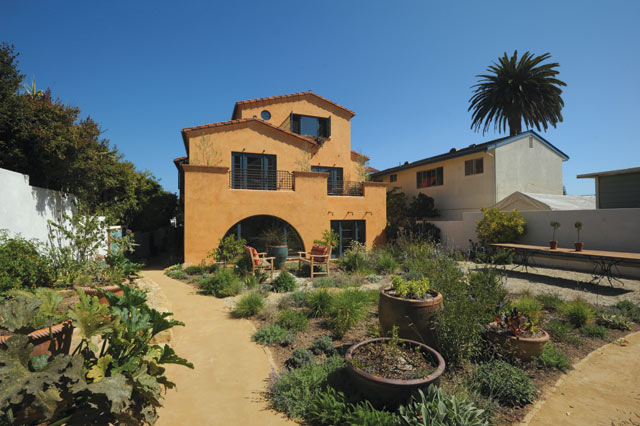
Just a few blocks east of State Street, nestled eloquently on the ocean side of Victoria Street, is a development that may just be the greenest urban residence ever built within the limits of the law.
The dream of longtime Santa Barbara-based builder Dennis Allen, Victoria Garden Mews is a four-unit, multifamily project that required heavily remodeling the circa-1887 home in front while simultaneously building three three-story condominium units in the back. When completed late last year, the complex earned a preliminary Platinum certification from the U.S. Green Building Council’s LEED (Leadership in Energy and Environmental Design) for Homes program, boasting a score of 118 out of a 136 max. It is, to date, the highest ranking for any residential project ever.
“The funny thing is, we weren’t really going for [the LEED ranking] at all,” said Mews project manager Zac Shore of Allen Associates. “We were just trying to do something as sustainable and innovative as possible, and it wasn’t until we got going that we decided to see what it would be on the LEED scale.”

Harvesting the sun and the rain to the fullest, the buildings and surrounding 11,250-square-foot lot cut a subtle yet beautiful and nature-stuffed profile in the heart of Santa Barbara’s historic district, thanks largely to architects Dennis Thompson and Susette Naylor and landscape architect Margie Grace. While the house and condos feature eco-minded bells and whistles straight out of the future, the actual cost of the whole project weighed in at a surprisingly affordable $415-$425 per square foot, a number that becomes all the more attractive when you consider the expenses saved in the years to come: heating, electricity, and water bills.
“Really, the main thing in all of this,” explained Shore, “is to show the public that this sort of stuff is not only attainable but also affordable.” What follows is a peeled-back look at some of the unique design features that help make Victoria Garden Mews tread so lightly on this planet that we all call home.
Landscape Love
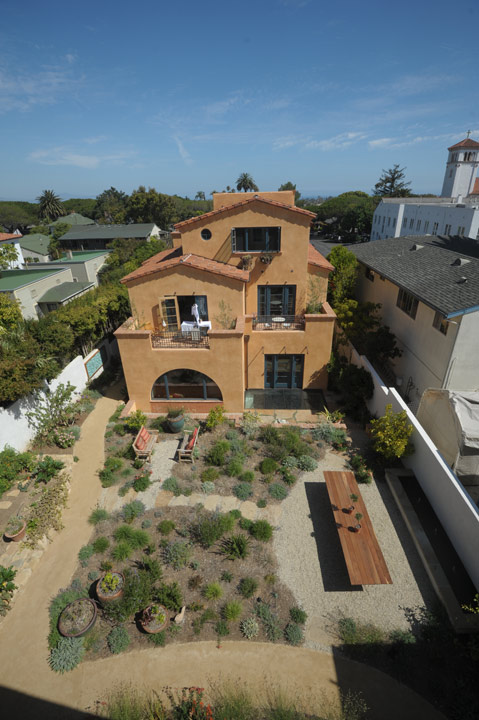
Virtually every open nook and cranny of the 11,250-square-foot lot creates a flavor of sustainability that is both edible and beautiful thanks to landscape designer Margie Grace. More than 30 fruit trees sprinkle the property among drought-tolerant native plants, a raised-bed veggie garden, a buffalo-grass lawn, and a honey-flush beehive. Even better, the whole landscape is watered solely throughout the year by the 14,000-gallon rainwater-harvesting system stored in the basement of the three-unit condo. According to Shore, during this past spring’s wet weather, the massive bladder filled up in only one storm. That’s right: This Eden-esque natural setting got all the water it needs for the next year during one 24-hour dump.

Harvesting the Sun
It took three full hearings with the city’s Historic Landmarks Commission just to iron out the details of Victoria Garden’s extensive 13-kW photovoltaic system. Since solar panels must be all but invisible in the “historic” part of town, designers and builders played a brutal game of hide-and-seek with the end result coming up just a hair short of Allen’s original vision. Nonetheless, by using passive solar-heating architectural design — in which the sun heats the house all day long and then the building radiates the stored heat out all night — combined with motorized “turtle shell” window awnings, around-the-clock computerized energy-modeling devices, only electric appliances, and the aforementioned solar panels, the whole property is on the brink of having a net-zero energy draw. And on even the coldest of days, the average daily temperature fluctuation in the condos is little more than one degree. Said Allen with a laugh of amazement, “I’m not sure we will ever fire up the heater.”
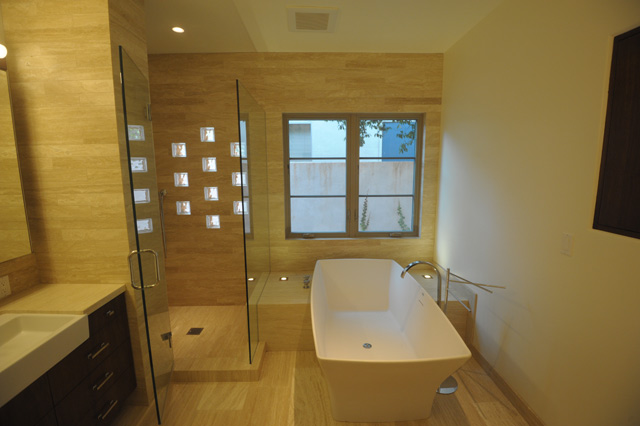
Pipe Dreams
Efficiency and state-of-the-art technology is the name of the game when it comes to plumbing at Victoria Garden. Ultra-low-flow shower and faucet heads are par for the course along with dual-flush toilets (one button for pee and a second one for heavier loads) and an elaborate, on-demand, tank-less hot-water heater system that uses solar-heated H₂O. As an added bonus, the heat generated from the hot water is recycled back into the building’s forced-air heating system and is available should the heater ever actually have to be turned on. “A lot of this stuff is pretty experimental,” said Shore about the plumbing system. “But so far, it has been working out great.”
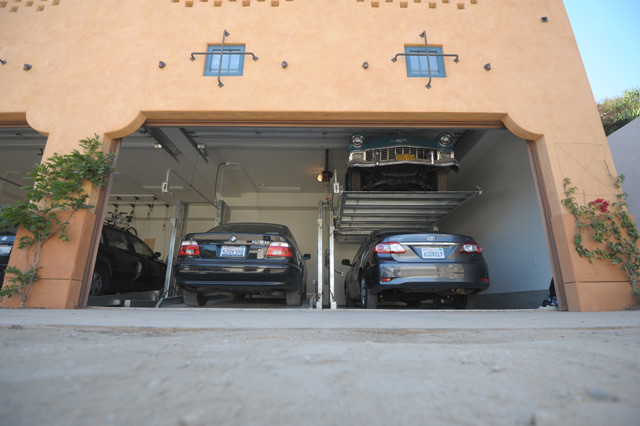
Lift Power
The city’s zoning restrictions that require two covered parking spots per residential unit often hinder the design of tasteful and affordable residential infill projects. Knowing this all too well, Allen started talking with the city about his hydraulic-garage-lift system before he even bought the property. As he puts it, “We really would not have been able to do this project without it.” Even then, convincing the city to sign off on the innovative parking-solution technology was anything but easy. Vastly decreasing the amount of hardscape necessary for the homes, the lifts — which take less than 30 seconds to rise — let cars park on top of each other.
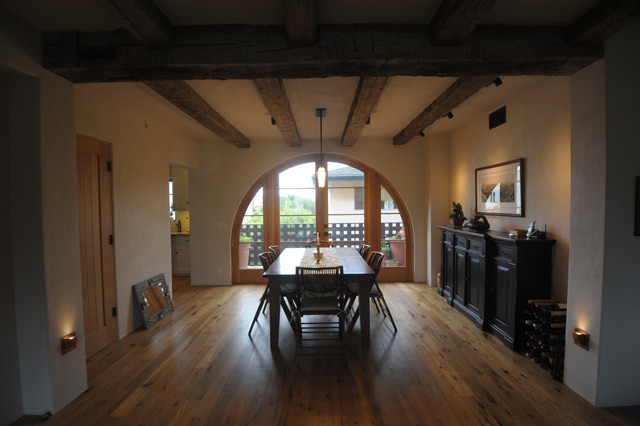
The Bigger Picture
Dennis Allen has been a champion of “green” building and thoughtful low-impact design ethos long before the word became the heady, all-encompassing global catchphrase it is today. To him, the Victoria Garden Mews was a chance to challenge his decades of experience in the field, build something truly cutting edge and aesthetically beautiful that could serve as an example of the way forward, and, as he put it, “reduce my own carbon footprint as much as possible.”
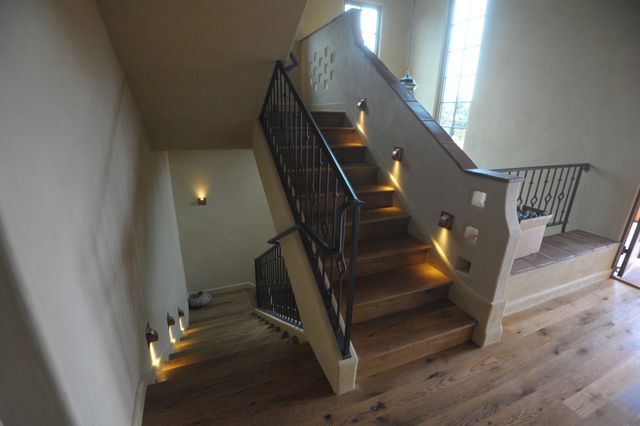
He and his wife, Jennifer Cushnie, swapped their longtime Mission Canyon neighborhood six months ago for the second-floor unit of the condo, and, already, the experience has far surpassed his hopes. “It just performs so unbelievably,” said Allen. “We have tapped into the natural elements everywhere we can, and, I honestly don’t know how this is possible, but it is actually quieter here than it was at our old house on Tunnel Road. It really is a paradise.”
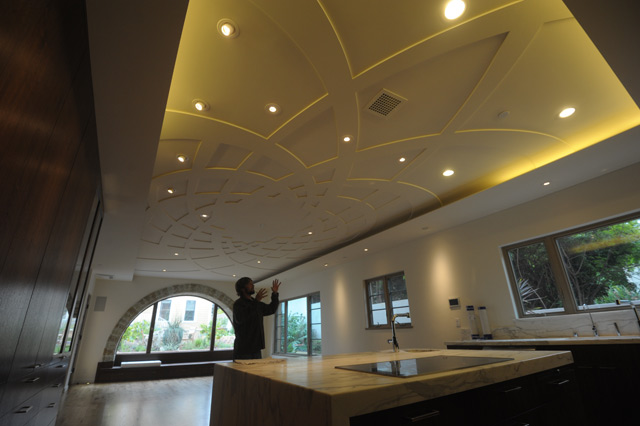
Another motivating factor for Allen was pushing the envelope on the city’s threshold for acceptable “green” innovations — something that, no matter whom you talk to, definitely remains a work in progress. He admits that the five years it took to finish the project — from the first meeting with the Historic Landmarks Commission to the final sign-off in 2010 — was “pretty fast for around here,” but he believes that it was nearly a year longer than it needed to be. With 13 separate meetings on solar panels alone and the fierce bureaucratic resistance his hydraulic-lift parking plan ran into, Allen explained, “When you are trying to do something innovative but it costs another several months in the process just to do it or even try to do it, that is going to discourage most developers.”
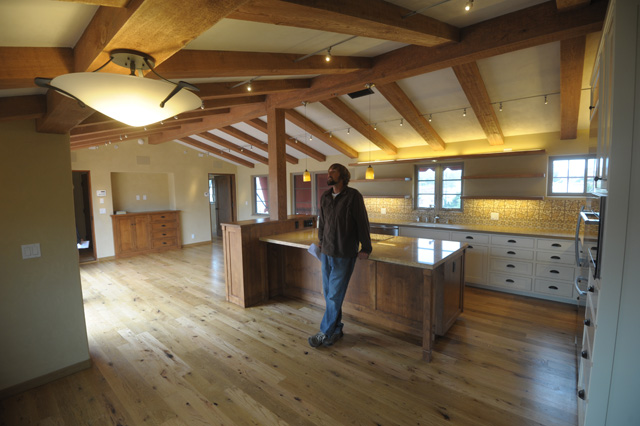
To him, the amount of time and money — most ground-up residential projects have at least $10,000 a month in carrying costs during the approval stage — needed to navigate the approval gauntlet at the city is out of step with the lip service being paid by elected officials about the need for more sustainable development. “Policy needs to be cleaned up to help facilitate innovation,” said Allen. “For example, sure, [solar] installations need to be tidy and neatly done, but they don’t have to be invisible. They can actually be attractive, and we need to allow for that.”
Let There Be Light
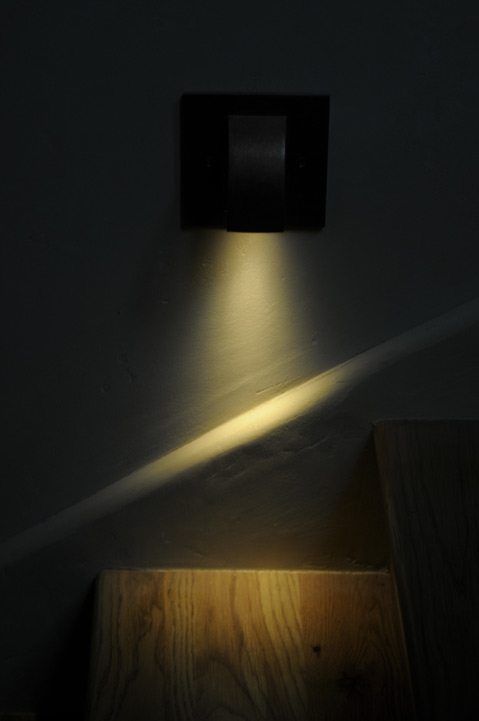
Looking to make the most out of the juice harvested from the sun, the folks in charge of the project made sure all the indoor and outdoor lights on the property were LED. This is a distinction that, in Zac Shore’s reckoning, makes Victoria Garden “probably one of the only buildings in California of its kind.” But don’t let the minuscule low-draw wattage of the LEDs fool you: The lighting, though certainly savvy, is dramatic throughout the property. An added bonus is that, even with regular usage, most of the lights won’t need to be replaced for at least 25 years.
Water, Water Everywhere
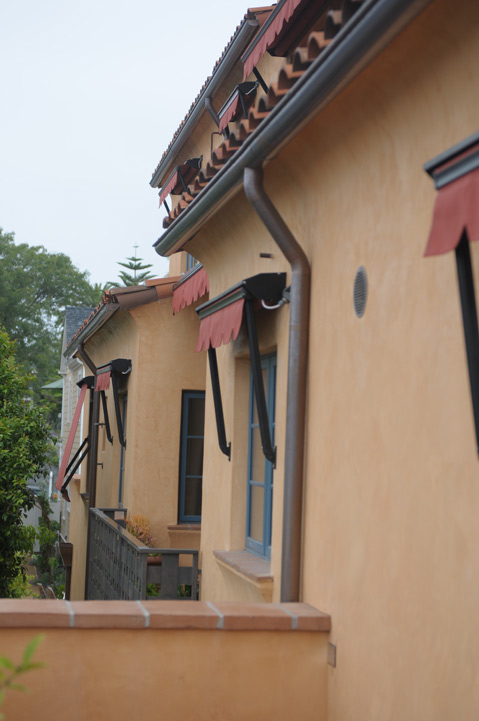
To get much-needed mileage out of every drop of Santa Barbara’s average 15 inches of annual rain, the condo unit is equipped with extensive copper guttering that feeds directly into a 14,000-gallon beast of a rain-storage bladder. Plus, large groundwater infiltrators were installed in the earth beneath the property’s center courtyard before the landscaping went in to ensure that, during intense storms, all of the rain gets a chance to eventually recharge the aquifer.



